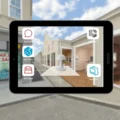Ah, the classic moment of regret. That comment you immediately wished you could snatch back from thin air. That decision made in a flash that cascaded into unforeseen complications. If only life had a simple ‘Ctrl+Z’, a digital undo button to wipe away the awkwardness or the error.
While we’re not exactly rewinding time like a faulty VCR, the fascinating truth is that the foundational elements for something remarkably similar are quietly taking shape within the realm of advanced technology. It’s not about altering the past, but about gaining such profound foresight that you can effectively “undo” potential future mistakes by simply avoiding them entirely.
Curious to see a quick visual take on this mind-bending concept? Check out this YouTube Short:
The idea of a real-life undo isn’t just sci-fi fodder anymore; it’s manifesting through sophisticated technological tools that empower us to model realities, predict outcomes, and learn from hypothetical scenarios without suffering real-world consequences.
Table of Contents
Beyond Time Travel: The Power of Digital Simulation
Let’s be clear: no technology currently allows you to literally go back five minutes and *not* say that thing. The past is done. However, technology is becoming incredibly adept at simulating potential futures based on different actions in the present. Think of it as running countless parallel universes digitally before picking the path you want to take.
This capability is built upon several converging technologies:
Digital Twins: Virtual Replicas for Real-World Testing
Imagine having a perfect, dynamic replica of a complex system – a factory floor, an entire city, a jet engine, or even a human organ – existing purely in the digital space. That’s the essence of a digital twin. These aren’t static models; they’re fueled by real-time data from their physical counterparts. This allows engineers, urban planners, doctors, and others to run simulations, test changes, predict maintenance needs, and understand the impact of potential problems *before* they happen in the physical world.
For instance, an urban planner could use a digital twin of a city to simulate the impact of a new traffic light system or a road closure on traffic flow across the entire metropolis. Instead of implementing a change blindly and causing real-world gridlock, they can test it virtually, refine it, and only then apply the optimal solution. This is effectively “undoing” the potential mistake of implementing a poor traffic plan.

Predictive AI and Big Data Analytics: Forecasting Consequences
Artificial intelligence, especially when coupled with massive datasets, has become incredibly powerful at identifying patterns and forecasting potential outcomes. By analyzing historical data and current trends, predictive AI can offer insights into what might happen if you take Action A versus Action B. This isn’t a crystal ball, but a sophisticated statistical analysis of probabilities.
In finance, AI models predict market movements or the likelihood of loan defaults. In healthcare, AI helps predict patient risks or the potential effectiveness of different treatments. Even in marketing, AI predicts which campaigns are most likely to succeed with specific demographics. While these predictions aren’t foolproof, they significantly reduce uncertainty and inform decisions, helping individuals and organizations avoid costly errors or missed opportunities.

Sophisticated Simulations and Training Environments
From flight simulators that train pilots for emergencies to complex surgical training simulators that allow aspiring surgeons to practice intricate procedures, realistic simulation has been a cornerstone of high-stakes professions for years. What’s changing is the increasing fidelity and accessibility of these environments, often powered by VR/AR technology.
These simulations allow users to make mistakes in a safe, controlled environment. Crash a virtual plane? No real harm done, but invaluable learning gained. Make an incorrect incision on a simulated patient? You get immediate feedback without risking a life. This ability to experiment, fail, and learn without consequence is perhaps the closest we currently have to a personal “undo” button for developing skills and understanding complex situations.

The Real “Undo”: Avoiding Future Regret Through Foresight
When you combine these technologies – a digital replica to test ideas, AI to predict outcomes based on data, and immersive simulations to practice scenarios – you get an unprecedented capacity for foresight. It’s not about changing a past action, but about making such informed, simulated, and tested decisions in the present that you preemptively avoid potential negative outcomes down the line.
Think about personal decisions, albeit on a simpler scale. Planning a complex trip? Travel apps use data to predict delays or optimal routes. Choosing a career path? Online tools might analyze market trends and required skills. While not as sophisticated as an industrial digital twin, these are everyday examples of using data and simulation (however basic) to inform choices and avoid future disappointment.
The truly advanced application lies in high-consequence fields, enabling professionals to iterate and perfect strategies virtually before committing to real-world action. This minimizes risk, saves resources, and dramatically increases the likelihood of a successful outcome. It’s decision-making amplified by technological foresight.
What This Tech Can’t Do (Yet)
It’s crucial to anchor this discussion in reality. This technology cannot:
- Change something that has already happened.
- Predict the future with 100% certainty (AI predictions are based on patterns, not fate).
- Account for completely unforeseen “black swan” events.
- Replace human judgment, creativity, or ethical consideration.
Furthermore, these technologies rely heavily on accurate data. A digital twin is only as good as the data feeding it. Predictive AI is prone to biases present in its training data. Simulations are simplified models of reality. Over-reliance or flawed implementation can lead to its own set of mistakes.

Looking Ahead: Towards More Integrated Foresight Systems
The trajectory of these technologies suggests increasing integration and sophistication. We might see more personal “digital twins” (though privacy concerns are significant), AI advisors offering more nuanced predictive insights for complex life decisions, and VR/AR simulations becoming commonplace tools for everything from professional development to personal skill-building.
The goal isn’t to eliminate mistakes entirely – failure is a vital part of learning and innovation – but to provide powerful tools that allow us to explore consequences virtually, learn faster, and make more intelligent, less regrettable choices in the real world.
FAQs About Tech and Foresight
Q: Is this technology accessible to average people?
A: Advanced digital twins and sophisticated predictive AI platforms are currently primarily used by large organizations and industries. However, elements like basic predictive analytics in apps (e.g., traffic predictions) and increasingly realistic consumer VR simulations are becoming more accessible.
Q: Can AI predict *my* future?
A: AI can analyze data patterns relevant to groups or probabilities based on specific inputs, but it cannot predict an individual’s exact personal future, which is influenced by countless unpredictable factors, including free will.
Q: Are there ethical concerns with using this tech?
A: Absolutely. Concerns include data privacy, potential for misuse of predictive capabilities (e.g., for discrimination), the risk of over-reliance on algorithms, and accountability when simulated outcomes differ from reality.
Q: How accurate are these simulations and predictions?
A: Accuracy varies greatly depending on the quality and quantity of data, the complexity of the system being modeled, and the sophistication of the algorithms. They are tools for *informed* decision-making, not guarantees.
Simulate, Learn, Perfect
While a true “undo” button remains firmly in the realm of science fiction, the tech we’re building today offers a powerful alternative: the ability to simulate, analyze, and learn from potential actions *before* committing to them in the real world. This isn’t erasing the past, but about building a future with fewer potential regrets by making smarter choices today. The power of tech-driven foresight is here, and it’s only getting stronger.




